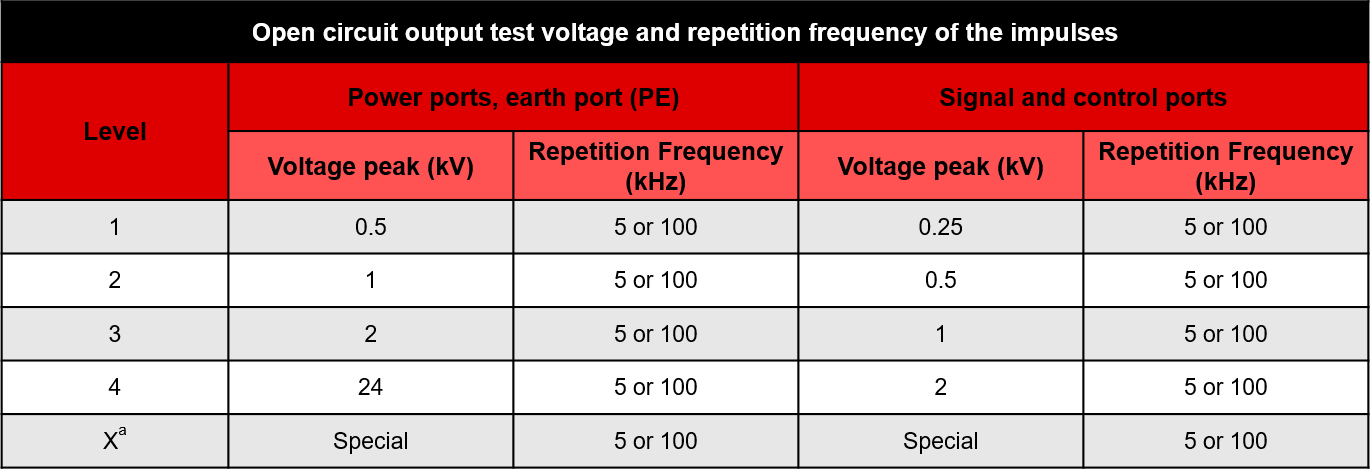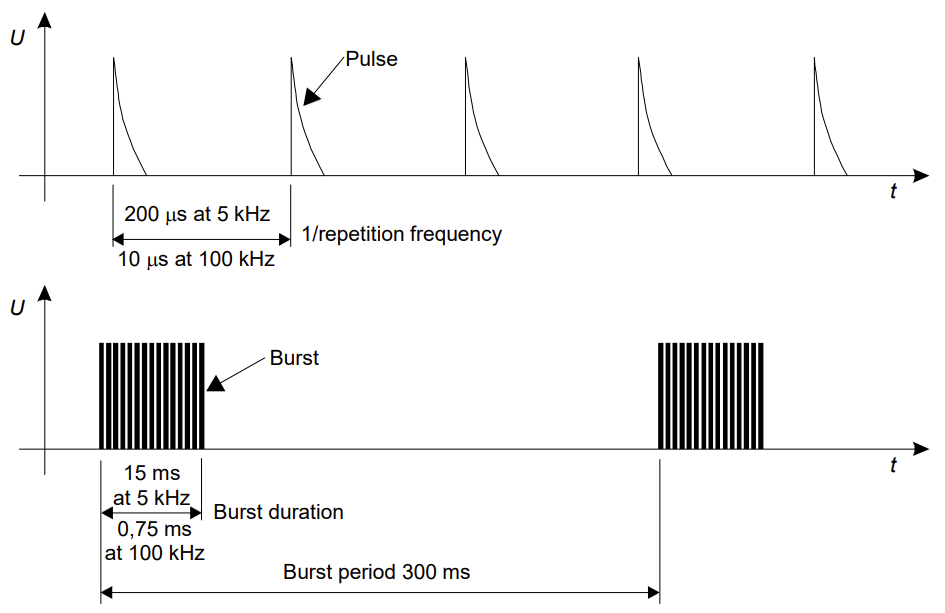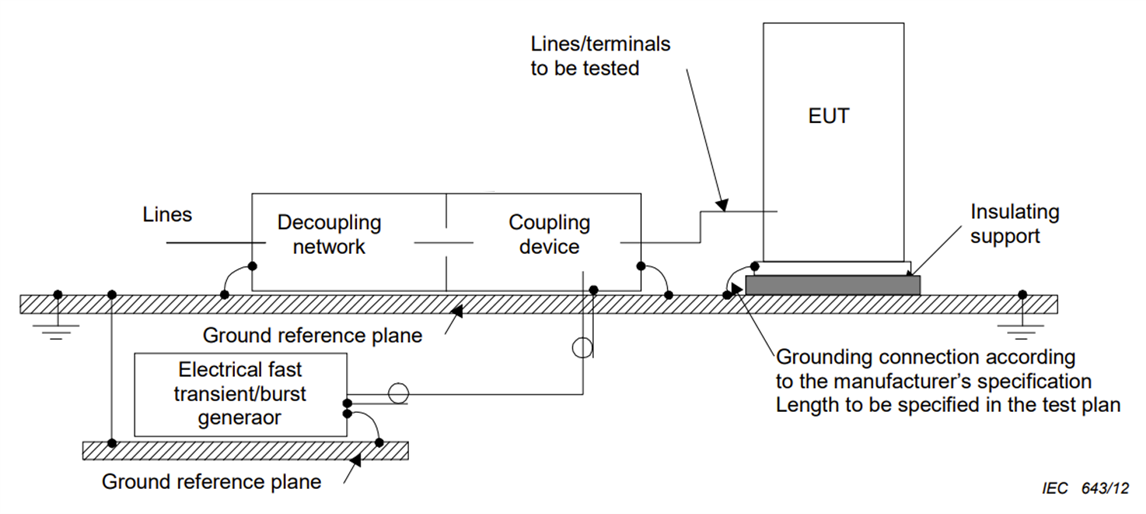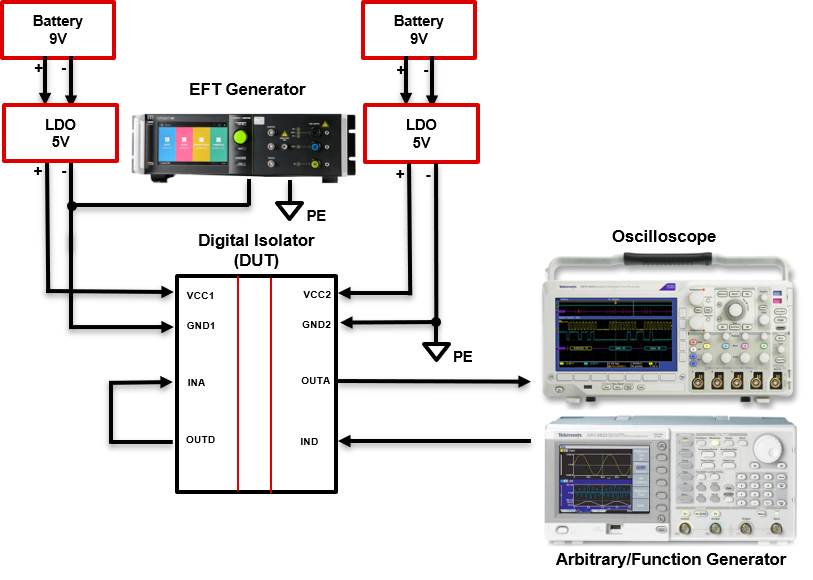What is Electrical Fast Transient (EFT) Immunity in isolators? How is it tested per IEC 61000-4-4?
This thread has been locked.
If you have a related question, please click the "Ask a related question" button in the top right corner. The newly created question will be automatically linked to this question.
What is Electrical Fast Transient (EFT) Immunity in isolators? How is it tested per IEC 61000-4-4?
*Please note that all definitions and references are based on the latest standard IEC 61000-4-4
Definition:
An EFT is a burst of high frequency voltage pulses that can cause interference in an electrical system. EFT testing is a fast method of transient pulse testing meant to assess a devices and/or system’s ability to withstand damage and maintain proper communication and operation through pulse of high voltage on power and/or communication buses. Its standard is defined by IEC 61000-4-4 which states the equipment, setup, procedure, and format of the test results.
Why is EFT immunity important in isolated systems?
Repetitive high-frequency electrical transients can occur in a system’s power supply or signal line from switching operations, power grid fluctuations, or lightning strikes. During this event, it’s crucial that the isolation barrier withstands the transients and is maintained to prevent system malfunction or failure.
Test level

The EFT immunity test is conducted successively at levels 1-4 with the option of adding additional levels above, below, or in between the others. Level 1 represents the lowest required test with a voltage peak of 0.5kV on the DUT power ports while level 4 represents the highest test with a voltage peak of 4kV.
Test equipment
Simplified Burst Generator

U – High voltage source Rs – Impulse duration shaping resistors
Rc – Charging resistor Rm – Impedance matching resistor
Cc – Energy storage capacitor Cd – DC blocking capacitor
The EFT generator must give a coaxial output for a duration of 15(±3)ms at 5kHz. The outputted waveform is shown below.
Generator output of electrical fast transient/burst

The following equipment is used in the test setup:
Test setup & procedure
The EFT generator is applied to the power ports of the DUT via the coupling device as shown in the figure below. The generator, DUT, and coupling/decoupling devices all share the same ground plane.
Block Diagram of EFT Immunity Test

Starting at level 1, the EFT generator triggers a burst into the power port while the signal generator is passing a signal through a logic pin. The operator monitors the scope to capture any functional loss or device failure. At each level, the device is struck with positive bursts and negative bursts. The time between tested ports should NOT be less than 1 minute. It is considered a pass if the DUT/EUT withstands the burst at a certain level.
Example schematic of ISOxxxx under test:

Test Results

The test results are evaluated by classifications of function loss or part degradation, and performance level defined under test levels section above. The classification of function loss or part degradation are tabulated below:
The overall test results are listed as:
ISOxxxx passes level 4 at criteria A
or…
ISOxxxx passes ±4kV at criteria A
Which means, ISOxxxx withstood ±4kV bursts without any loss of function or degradation of performance.